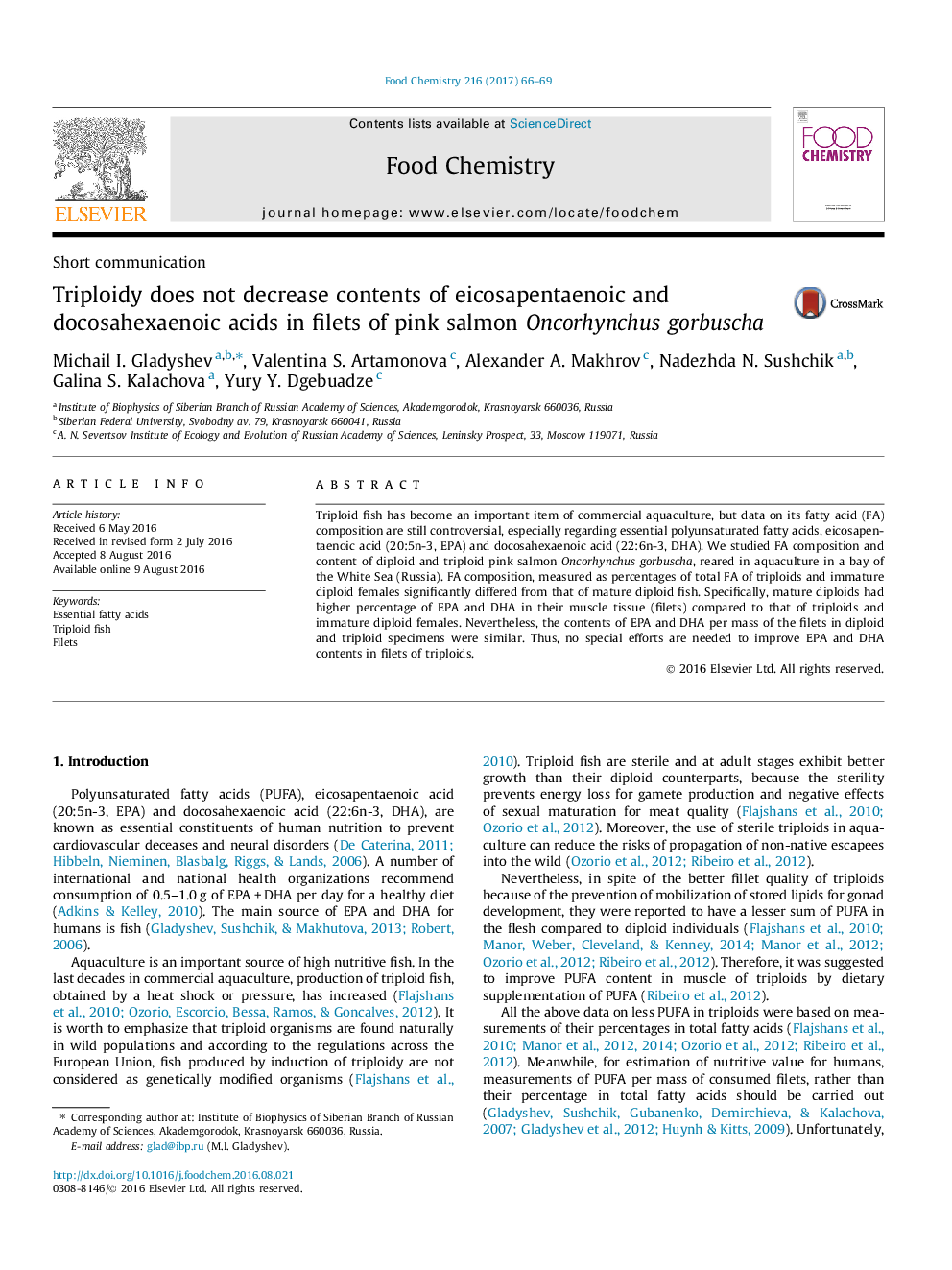| Article ID | Journal | Published Year | Pages | File Type |
|---|---|---|---|---|
| 1183050 | Food Chemistry | 2017 | 4 Pages |
•Eicosapentaenoic (EPA) and docosahexaenoic (DHA) fatty acids were measured.•Percentages of EPA & DHA in filets of triploids were lower, than those of diploids.•Contents of EPA & DHA per mass of the filets in triploids and diploids were similar.•The reciprocal ratio of percentages and contents of EPA & DHA in fish is discussed.•Sexual maturation was one of the main driver of fatty acid profiles of the fish.
Triploid fish has become an important item of commercial aquaculture, but data on its fatty acid (FA) composition are still controversial, especially regarding essential polyunsaturated fatty acids, eicosapentaenoic acid (20:5n-3, EPA) and docosahexaenoic acid (22:6n-3, DHA). We studied FA composition and content of diploid and triploid pink salmon Oncorhynchus gorbuscha, reared in aquaculture in a bay of the White Sea (Russia). FA composition, measured as percentages of total FA of triploids and immature diploid females significantly differed from that of mature diploid fish. Specifically, mature diploids had higher percentage of EPA and DHA in their muscle tissue (filets) compared to that of triploids and immature diploid females. Nevertheless, the contents of EPA and DHA per mass of the filets in diploid and triploid specimens were similar. Thus, no special efforts are needed to improve EPA and DHA contents in filets of triploids.
Graphical abstractFigure optionsDownload full-size imageDownload as PowerPoint slide
